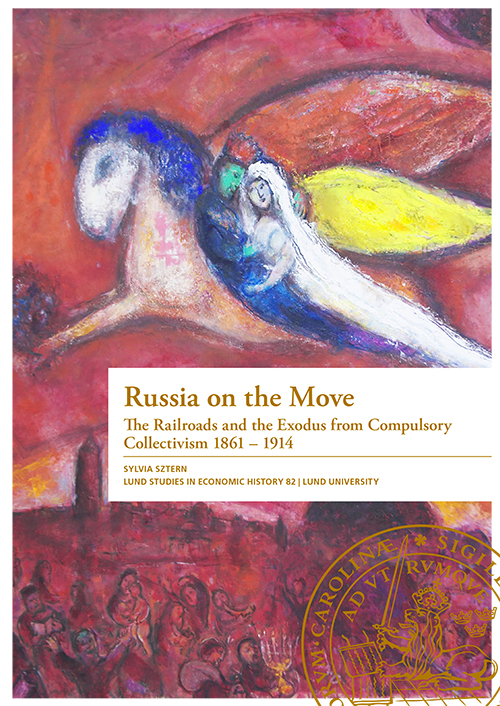Beskrivning
Western scholars of Tsarist Russia emphasize the continuity of collectivism on the Russian plain. Numerous endogenous factors explain the human clustering that occurred as kinship structures evolved into territorial agrarian communal patterns. In my dissertation, combining the Westernizers’ and the Slavophiles’ conceptualization of the mir—the village commune—it is argued that precarious climatic conditions, uncertain yields, and the high frequency of famines and other calamities caused peasant mutual-insurance strategies to take shape, resulting in krugovaya poruka (mutual responsibility). Tsarist rulers exploited this practice to enhance tax extraction, impose social control, and reduce surveillance costs. The ensuing degradation of labor explains Tsarist Russia’s perennial status as a technology importer and a debtor. The Imperial rulers’ territorial aspirations that entailed the strategic import of railroads, however, incentivized the peasantry to accumulate literacy and other skills that, by investing them with growing subversive and bargaining power, compelled modernizing reforms. By inducing a culturally revolutionizing reduction of temporal-cognitive distances, the railroads linked the peasants of European Russia to urban industrial economies and to customary (volost) and formal Imperial court systems, cumulatively reducing the costs of property and individual-dignity lawsuits while increasing the predictability of outcomes favorable to them. The railroads also dramatically mitigated the uncertainties and mortal perils of peasant life while introducing peasants to a plethora of institutions allowing rational choice, specialization, and, from 1903 onward, gradual delegation of property rights by the rulers. Challenging Gerschenkron, I posit that the nature of collectivism changed after the emancipation. The iron arms of the Tsarist state—the railroads that steered peasants to seasonal wage labor as well as permanent migration—paved the way to a modernizing transition from authoritarian obedience to rational utility maximization. The compulsory collectivism of the serfdom era gave way to rationalist cooperation and individualism. The delegation of household-head property rights in land, catalyzed by the railroads and codified in Stolypin’s reform, portended Russia’s transition to a constitutional monarchy. As an epilogue, the empirical and concluding chapter of the dissertation reveals a positive correlation between a commune’s distance from the nearest railroad stations and the proportion of peasant land cultivated in the traditional collectivist repartitioning manner of the obshchina, and a negative correlation between distance from the railroad and the proportion of individualistic modes of land cultivation. This empirical chapter, co-authored by my advisor, Professor Michael Keren, suggests that the modernization of Russia was occasioned by the railroads and occurred three decades before the advent of Stalinism.



